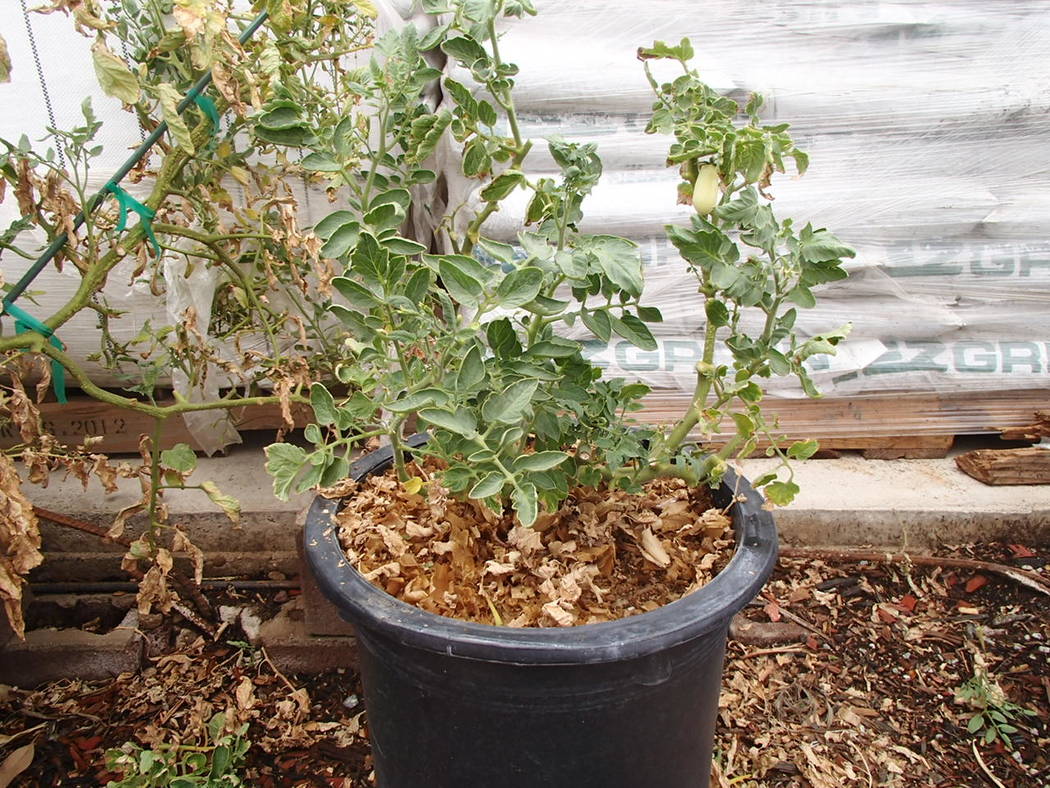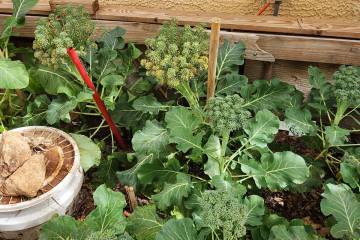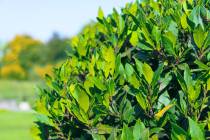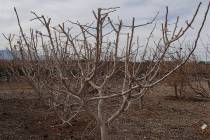Over-pruning tomato plants could lead to sunburn
Q: My tomato plants are growing nicely, but some are getting very long vines. I think they’re Sweet 100, but there may be a Hawaiian plant in there somewhere. Should I cut them back or continue to let them roam?
A: Tomato plants stop setting fruit when daytime air temperatures are in the mid-90s or above. Harvest fruit from them when it’s hot, but they won’t set fruit again from new growth until the temperature drops back into the mid-90s. Either pull the tomato plants when they’re done producing and plant new ones from seed, or prune the old ones back and let them flower and fruit again when it’s cooler.
Many people who try pruning them back in the summer fail because the vines are pruned too severely. This type of pruning opens the interior of the plant to intense sunlight, causing sunburn and the plants die. Remove about one-third of the plant and leave plenty of leaves to reduce sunburn.
Sweet 100 and Hawaiian Tropic are indeterminate tomatoes, which means their vines get long, producing flowers and fruit on longer and longer vines during the growing season. Indeterminate tomatoes need lots of room to spread or force them to grow upright on a trellis or cage so they use less space. Light summer pruning, after they finish setting fruit, forces them to stay smaller and encourages new growth which tends to flower more.
Determinate tomatoes stay smaller and produce fruit all at once. These varieties are good for early production. Popular varieties of tomatoes for the desert such as Early Girl, Champion and Celebrity include both determinate and indeterminate forms, so pick the right one. All the Roma types of tomatoes, like San Marzano, are determinate. Select determinate tomato seed if planting them directly in the garden for a fall crop.
If you plan to use seed for a fall crop of tomatoes, know the days to harvest for the variety and the approximate date you think is good for harvesting. Add five days to the days to harvest and count backward from the harvest date to arrive at the planting date. If you want to harvest on Nov. 1 and the number of days to harvest for the variety you selected is 65 days, the approximate date for seeding is Aug. 23.
Q: I have a cow’s tongue cactus in my front yard, and half of it is not looking very good. I had it on a drip system but capped it as I read cactus needs very little water. Now I water it by hand every seven weeks and spread some cactus food every other water cycle.
A: Cow’s tongue cactus, one of the opuntias or prickly pear cactus, is native to our desert Southwest. But it’s mostly found in the Chihuahuan and Sonoran deserts rather than the Mojave Desert. Apparently, it needs a bit more rainfall than cactuses native to the Mojave Desert. Parts of the Chihuahuan and Sonoran deserts get as much as 50 percent more water than the Mojave Desert.
A quick side note. Some people think desert native plants should survive with no extra water. We live in the desert, right? So, Mojave Desert plants should survive in our climate with no extra water, right? Wrong and here’s why.
I’m probably wrong about the exact numbers but for every native plant that survives in our wild desert on natural rainfall, perhaps 10,000 die. Secondly, do you really want the look of a wild desert native plant in your landscape? They can be beautiful for sure, but to become beautiful, they need extra TLC in the form of water, soil amendments and fertilizer.
What’s meant by “very little water”? Does “very little” mean a sip of water every day? Or does “very little water” mean it doesn’t get watered very often? The first interpretation can be set up with an irrigation controller. The second interpretation might mean watering with a hose.
I water prickly pear cactuses every three to four weeks during the summer when I want it to flower, produce fruit and get bigger and fertilize it once a year. I water it by turning on the valve. But your full-sized prickly pear cactus will tell you when to water. The pads of these cactuses shrivel and wrinkle when they need water. Make a note to yourself when this happens. Irrigate your cow’s tongue cactus a couple of weeks before the pads start to shrivel if you want to maintain its present size.
Q: My peach tree is starting to yellow, and I cannot get the new growth to be green. I’m doing my best to fertilize and keep the pH within the 6.0 to 7.0 range, but I cannot get new growth to be dark green.
A: The green color of healthy fruit tree leaves is made darker with applications of fertilizers high in nitrogen and iron. Fertilizers applied to the soil take longer to make dark green leaves than liquid fertilizers sprayed on the leaves.
If I want a fast color response in the leaves, I apply these fertilizers as a liquid spray to the leaves. But it’s important that the pH of the fertilizer liquid applied to the leaves should be as close to 7.0 as possible.
If I prepare the soil well at the time of planting and I’ve put a layer of wood chips around the tree to add organics to the soil, I ignore the soil pH. Trying to lower the soil pH into the proper range for fruit trees would be a constant and expensive battle in desert soils. Ninety-five percent of the fruit tree will not become yellow in our soils if the soil is properly amended at planting time and covered with wood chips that will decompose.
Fruit trees planted in soils not well-prepared will develop growth and leaf color problems as early as the first growing season. Depending on the quality of compost used, a fertilizer application might not be needed for the first two years.
Leaf yellowing this time of year can be from a lack of nitrogen fertilizer, a need for an iron fertilizer or watering too often. To correct leaf yellowing this time of year, I use the shotgun approach. That means I apply both nitrogen and iron fertilizers to the soil and combine that with a liquid spray to the leaves. Liquid sprays are applied to the leaves early in the morning while it still cool.
Q: We just discovered a peach tree borer eating at our tree a few weeks ago. There were holes in the trunk and sap coming out. After poking in the holes, nothing came out. We sprayed with Sevin insecticide hoping to help the tree out. Can you tell us what stage we might be in this process and do you think the tree will live?
A: The holes you see in the trunk are exit holes of the borer. It’s gone. There is nothing inside those holes anymore. The adult has left the tree and found a mate so that she can lay more eggs on yours or maybe someone else’s tree. The borers are gone for now, but they will be back to finish off your tree. It’s possible to save the tree if they haven’t done too much damage to it already.
When the borers are active inside the tree, usually in the spring or early summer, there is nothing to tell you there are borers unless there is rain or the trunk gets wet. The next day sap oozes from the trunk like an orange jelly, and you know they are there. If it’s hot and dry, the sap oozes from the trunk and hardens almost immediately into amber crystals.
Save your money. Applying Sevin insecticide won’t help. There is an insecticide you can dilute with water, called Imidacloprid (Bayer Tree and Shrub Insect Control) and pour around the base of the tree. Though the label permits it, I wouldn’t eat the fruit from that tree next year.
Don’t be afraid to take a sharp, sanitized knife and remove any dead bark and sap from the trunk or limbs. Remove this dead layer down to fresh wood. You will not hurt the tree if the knife is sharp, clean and sanitized when you do this.
From now on, leave any suckers that grow from the bottom of the trunk for one year to help shade the trunk. Apply fertilizer or compost around the tree and water it in to help it recover. Do it at the same time as you apply the borer control chemical.
Paint the trunk and limbs in full sun with white latex paint diluted half and half with water to help reduce damage from sunburn which attracts borers.
Bob Morris is a horticulture expert and professor emeritus of the University of Nevada, Las Vegas. Visit his blog at xtremehorticulture.blogspot.com. Send questions to Extremehort@aol.com.





























